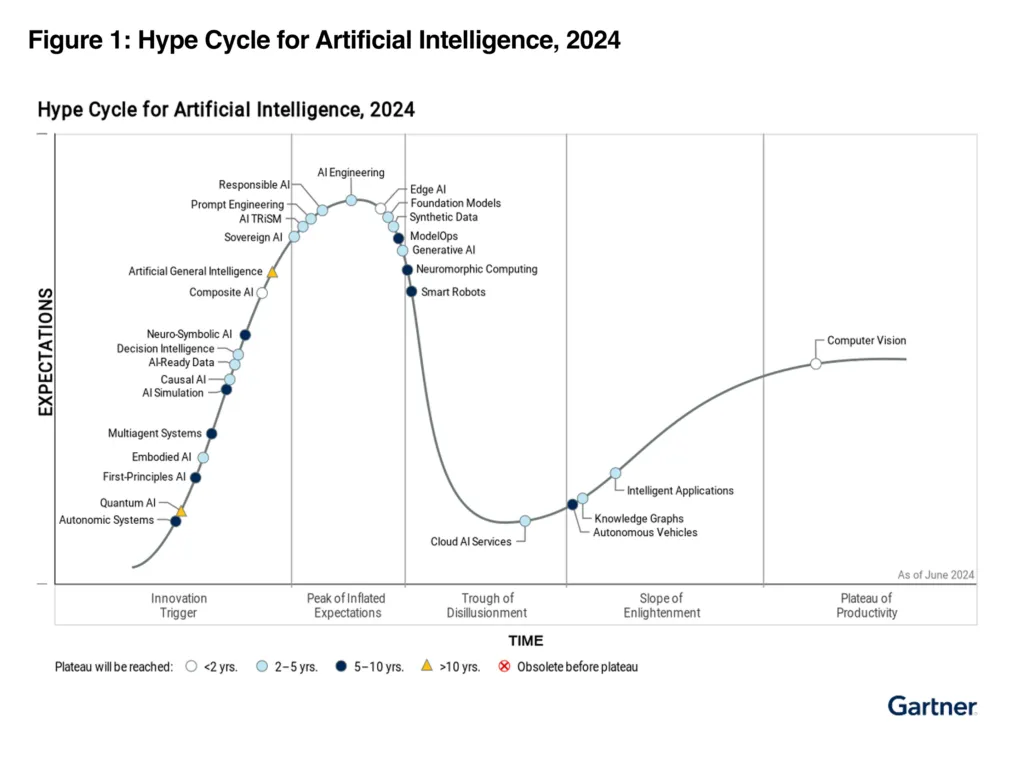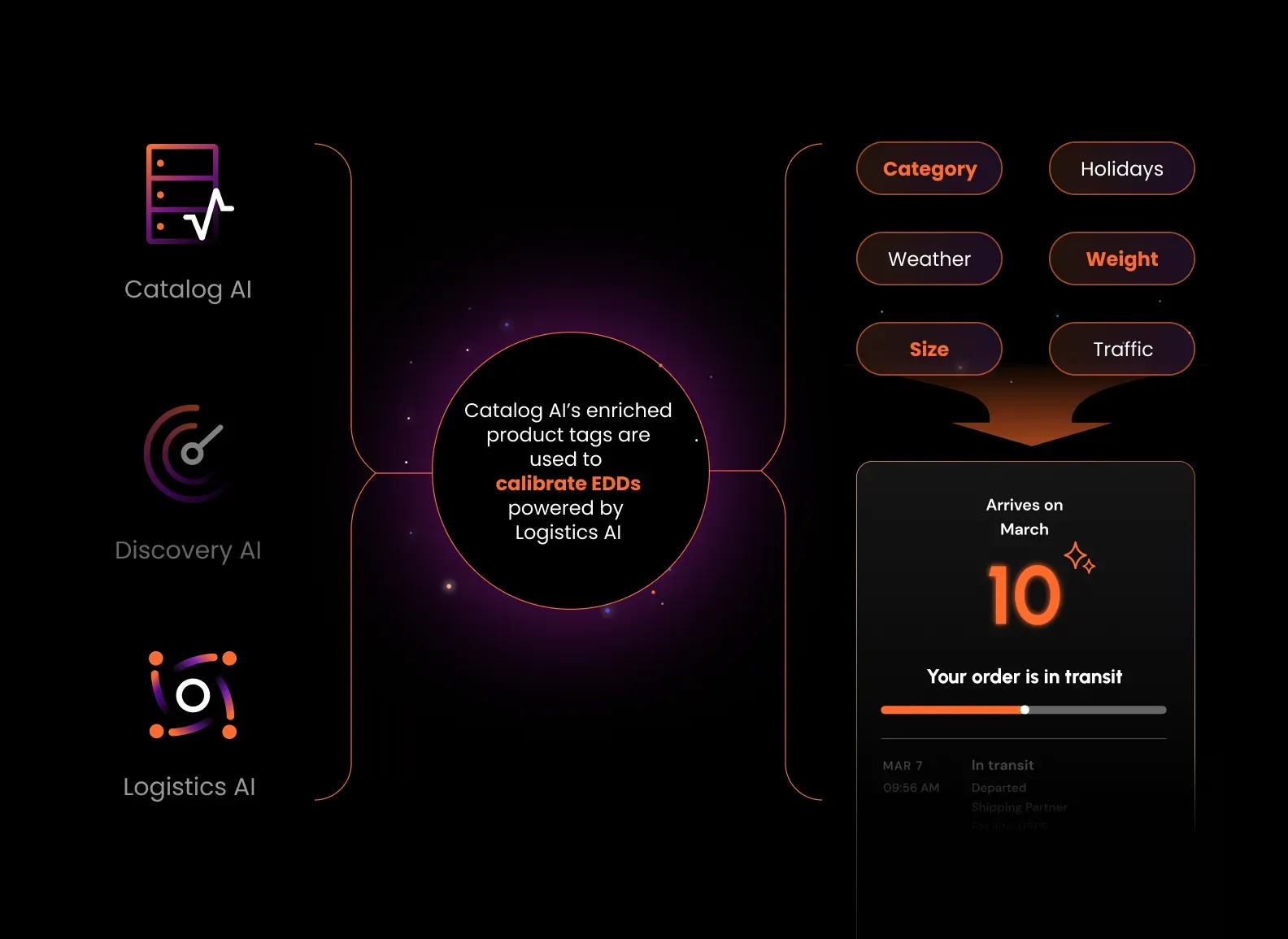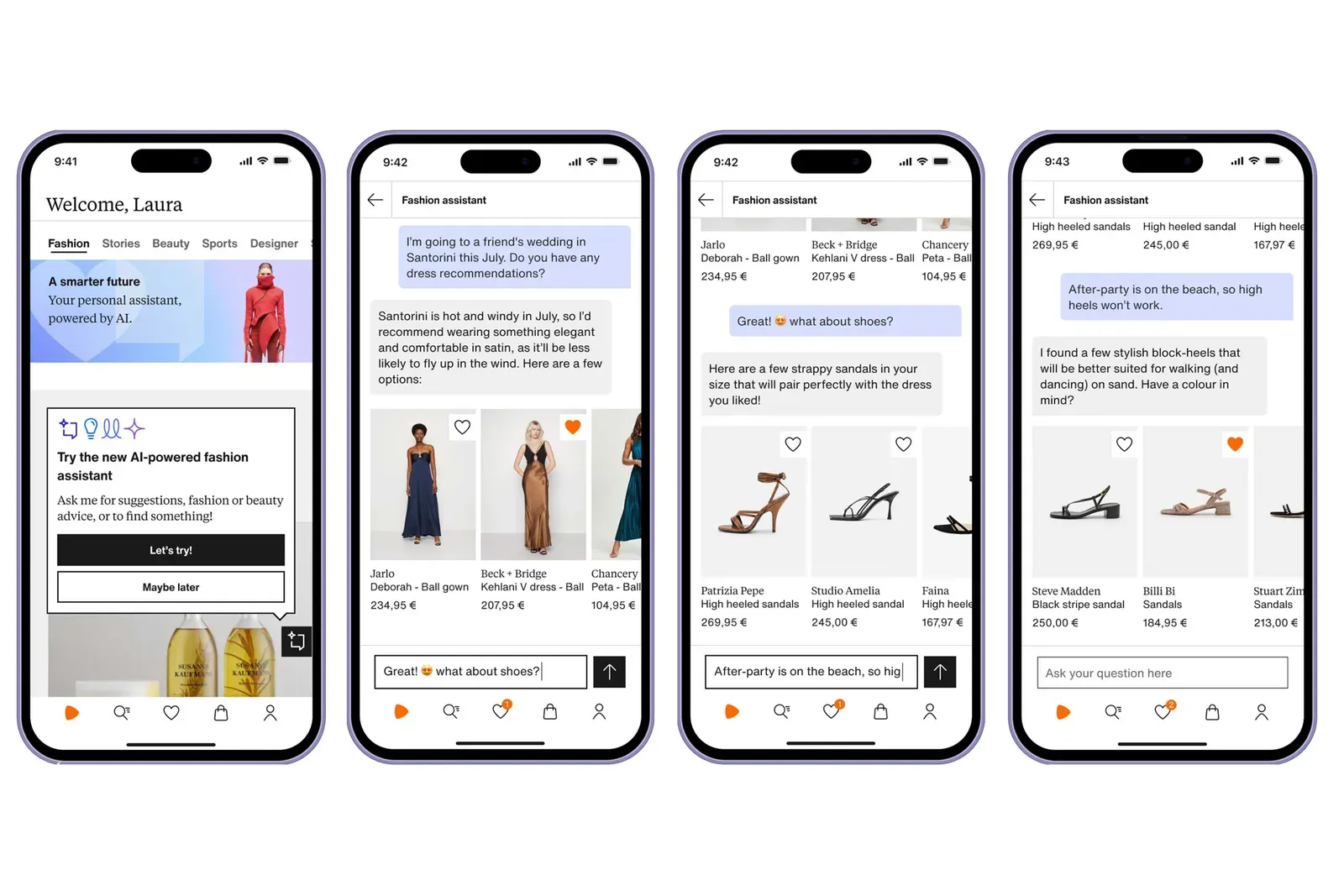3 Ways AI is Transforming eCommerce Marketing (and 1 Way It's Not)

Let’s jump into our time machine.
Set the dial in the Delorean to October 2014 — ten years ago, at the time of publication. Gartner has just published ‘Top 10 Strategic Predictions for 2015 and Beyond,’ prepared by nearly two dozen analysts who are attempting to lay out a roadmap for digital business in the coming decade.
Here’s a sample of the predictions most relevant to eCommerce marketing:
- By 2016, $2.5 billion in online shopping will be performed exclusively by mobile digital assistants.
- By 2017, nearly 20 percent of durable goods e-tailers will use 3D printing to create personalized product offerings.
- By 2018, retail businesses that utilize targeted messaging in combination with internal positioning systems will see a 20 percent increase in customer visits.
The first two forecasts overestimate the influence of emerging technologies at the time: 3D printing and digital assistants. The third might be closer to true — except that the prediction couldn't reckon with the end of third-party cookies and the push for greater privacy following scandals like Cambridge Analytica.
What can we learn from Gartner's attempt to guess what our primary concerns would be in 2024? Predicting the future is notoriously difficult.
And that brings us to our present, "AI-speculative" topic (which, ahem, Gartner did not predict). When we talk about AI's lasting impact on eCommerce, it’s similarly easy to get mired in the AI hype of the present moment and miss the mark. Instead, let's look at how AI could be currently impacting your daily practices and why it may or may not be important to how you do business in the future — marketing campaigns, customer service, content creation, and beyond.

Application 1: Generative AI
When people in eCommerce get excited about AI in 2024, they're often talking about some form of generative AI. This category of AI includes large language models (LLM) like GPT as well as diffusion and generative adversarial network (GAN) models used to create images or videos.
Whether it's adding human-like voiceover to TikTok videos, crafting a series of promotional emails in seconds, or generating disturbing videos of Will Smith eating endless amounts of spaghetti, we're in the midst of a generative AI boom that's unlikely to disappear tomorrow, and will have a lasting impact on our culture and how we do business.
The bombshell dropped in the summer of 2022 when OpenAI introduced ChatGPT (using GPT-3.5) as part of a free research preview. Though the API was available to select developers, the public now has direct access to GPT. eCommerce marketing circles on LinkedIn exploded with examples of the impressive results you could create in seconds. Not surprisingly, every SaaS tool on the block suddenly incorporated "AI-powered" features too – and not all were created equal.
On Gartner's own "hype cycle," we've already passed the peak of inflated expectations when it comes to generative AI. And the danger here is that we can go too far in assuming further giant leaps are ahead.

However, even if developments in generative AI were to plateau today — as some have argued they have — eCommerce marketers would be mistaken to ignore some of the significant applications that currently exist:
- Repurposing messaging for different channels: While generating content via AI whole-cloth tends to lead to middling results, AI is good at repurposing existing material for different contexts. Feeding it the intro to a blog post, for instance, and providing specific parameters, you can easily create a LinkedIn post promoting it. From a product description, you can generate an email or a headline for a landing page.
- Brainstorming and testing ideas: AI, for instance, can generate concept art, create variations of taglines, or outline possible customer objections. As you can see in the screenshot below, it's quite effective at roleplaying different personas.
- Preliminary research: As some infamous examples have shown, most generative AI will prioritize giving you an answer – any answer, even a wrong answer – over saying it doesn't know. That said, if you're rigorous about double-checking sources, it is fairly successful at providing general information.
- Optimizing content for organic search: With the correct prompts or specific tools, you can easily take a webpage or blog content and layer in selected keywords. More robust tools can provide you with a score that indicates the likelihood of ranking and helps you optimize further.
Ultimately, it's prudent to train on some generative AI tools and integrate them into your workflows at strategic points where they can reduce repetitive tasks and fill out gaps. Our recommendation: leave the truly creative work of resonating with customers to humans, but use AI to help you extend your reach or deliver results faster.
(If you want to dig deeper, we discuss the applications of generative AI for eCommerce in more detail in a recent blog post.)
Application 2: AI-Powered Automation
When it comes to saving money, some businesses think only of reducing direct costs – in other words, expenditures. However, your team's time is also a very precious (and limited!) resource, the lack of which can prevent eCommerce companies from achieving real growth. It's for this reason that automation can be so powerful: it streamlines repetitive processes, cutting down on or sometimes eliminating the need for human intervention altogether and leading to big boosts in productivity. AI revenue growth is real, and it's spectacular.
For eCommerce marketers, artificial intelligence adds horsepower to automation and opens new opportunities to automate what previously might have been challenging before. For instance, AI can be used for scheduling emails and marketing campaigns at optimal times, optimizing conversion rates and automating A/B testing. As more apps are layered into existing solutions, it's likely that AI-powered automation will work at both ends of your workflow – solving for both very simple, very repetitive tasks and helping marketers coordinate top-down complexity with greater ease by handling massive amounts of data.
Customer service is another area where AI-powered automation can help reduce the demands faced by customer service teams, especially during busy times of the year. Tier-one support requests like answering WISMO tickets, providing basic information, processing simple transactions, and initiating standard procedures are all likely solved via automation. More impressively, tools like AfterShip's Logistics AI uses deep learning to build complex models that recognize, standardize, and complete tracking information to delivery hyper-accurate delivery date estimates.

AI-powered chatbots can also help reduce the need for human interaction to answer simple. Just remember, as we noted above, that AI can hallucinate answers, including company policies. (Just ask Air Canada, who were forced to honor a refund after a chabot invented policy.) For eCommerce merchants, ensuring the AI is accurately trained and regularly updated. While some have asserted these hallucinations are an inevitable part of LLMs, it's likely many of these issues will be solved with better data and stricter limits.
Regardless, AI chatbots and similar tools will be much more prevalent is helping reduce the number of tickets your team needs to attend to directly. It'll be up to you whether you automate every stage of these requests or include a human component to ensure they're right.
You can read more about AI and automation in our panel interview on AI automation or watch the whole webinar here.
Application 3: Personalization
"Personalization" should be an easy sell to eCommerce marketers.
After all, the retail space has long understood the value of offering personalized, friendly services to prospective customers, especially for high-ticket items. Not only do personalized recommendations increase the likelihood of a sale, but connecting with customers on a one-to-one basis can be a powerful relationship builder, fostering brand loyalty and ensuring word-of-mouth referrals.
Traditionally, the problem is scale: while offering personalized service at a brick-and-mortar boutique can be easy, big box stores have a much harder time. And modern eCommerce adds another layer of complexity altogether: people might encounter your brand via an organic search, a paid ad, a social commerce platform, a marketplace, a review, or in countless other ways. How do you ensure not only consistency of experience but also serve them as individuals and not part of a crowd?
AI helps solve the scaling challenge and allows merchants to personalize at every touchpoint, delivering both that quality of consistency and individual service that is the core of personalization. (Not surprisingly, luxury brands like Louis Vitton have been leading the way with personal AI shopping bots that tailor recommendations using shopping habits.)

Thankfully, you don't need your team of software engineers to make it happen – turnkey solutions exist. At AfterShip, eCommerce personalization using artificial intelligence means three things:
- Collecting and analysis of customer data: AI algorithms can quickly analyze relevant data about customer preferences and behavioral data, identifying patterns that help you deliver personalized service.
- Making real-time recommendations: Using data, AI can provide real-time recommendations across the customer journey, including your product pages and at various touchpoints both during and after checkout. These can also be powerful opportunities to upsell or cross-sell based on the customer's legitimate needs.
- Omnichannel integration: Consistent recommendations across channels enhance the overall customer experience, but managing those channels can be challenging. AI makes this element of personalization much easier to accomplish.
Keeping the Human in Customer Experience
It’s indisputable that AI-powered marketing tools create efficiencies, freeing up the eCommerce marketer to focus on more critical tasks. Generative AI can knock out a draft of an email in seconds, while automation and personalization enable levels of prediction, data analysis, and optimization that are impractical or impossible by humans alone.
That said, one of the core values of marketing is differentiation, and eCommerce is no different. Whether you’re talking about positioning your brand in the marketplace, highlighting your products' unique sales proposition, or building an authentic connection with a community, these goals require a keen eye for originality and creativity. Essentially, standing out is key to discoverability.
Right now, however, eCommerce AI has a bit of an originality problem and may be having a homogenizing effect that human marketers should be prepared to work against.
As Sigal Samuel puts it in an article for Vox, "...asking LLMs for help at the earliest stages of our creative process will yield a certain answer that inevitably primes us to think in a certain direction. There will be thought paths we’re less likely to go down because ChatGPT has already got certain (majority) voices whispering in our ears." AI can be helpful for generating alternatives or bouncing ideas off of, but it's your human marketers who can help ensure you've gotten to the core of your audience's concerns – and that what you're putting out there still resonates with real humans.
So, yeah, embrace AI for your eCommerce marketing, but don't forget the human element in ideation and production. Likely, this will be the trend in terms of how eCommerce marketers work with AI to augment, rather than replace, their skills.
Investing (Smartly) in Artificial Intelligence
When we look back on this topic from 2034, AI in eCommerce marketing might feel like a distant concern – a momentary stop on the hype train, so to speak, or just another buzzword. But crucially, technologies behind buzzwords often don't disappear; they become the norm. Sure, nobody bothers talking about the "cloud" or "high-definition" anymore, but not because these technologies no longer exist or are irrelevant. It's that they've become ubiquitous. AI is the same.
At AfterShip, we instead take a no-hype approach to AI. Our data and AI engineering teams meticulously integrate cutting-edge technology to help our customers achieve better results, faster. No flashy gimmicks, no basic API calls – we're talking game-changing precision made possible by an expansive data set built over 10 years. Learn more about the AfterShip Intelligence program.

